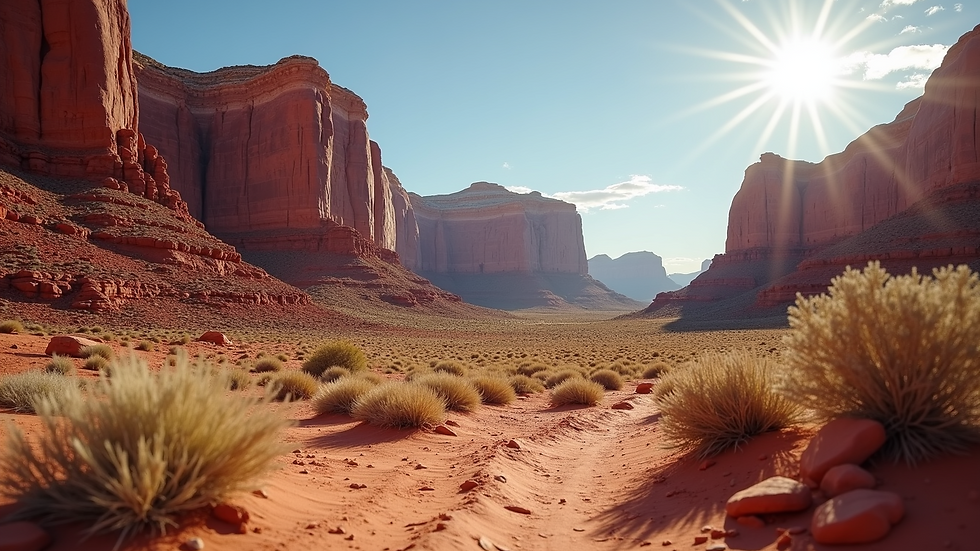The Dual Edge of Chalk in Red Rock Canyon Balancing Climbing Ethics and Wilderness Aesthetics
- Mike Donaldson
- Aug 6
- 4 min read
Updated: Aug 7
Climbing in Red Rock Canyon offers some of the most stunning and challenging routes in the country. As climbers ascend the iconic red sandstone, many rely on chalk as a key tool for improving grip. Yet, the use of climbing chalk brings forth a complex issue. On one hand, it assists climbers in their efforts to tackle challenging routes; on the other hand, its residue and the associated tick marks create a visual and ethical dilemma. This post aims to explore the use of chalk in Red Rock Canyon, examining its aesthetic effects, the controversies surrounding tick marks, and ways to practice responsible usage.
Visual Impact of Chalk on Red Sandstone
When you look at the towering cliffs of Red Rock Canyon, the vibrant reds and oranges of the sandstone create a captivating landscape. However, climbing chalk disrupts this natural beauty. Over time, chalk marks accumulate, turning sections of pristine rock into a patchwork of white smudges.

In fact, studies have shown that excessive chalk buildup can decrease the visual appeal of climbing areas by up to 40%. Each climb tells a story, but chalk can lead to a more uniform appearance that detracts from the unique character of the rock. For many outdoor enthusiasts, the wild feel that attracts them to these cliffs becomes overshadowed by recognizable white streaks. The visual impact of chalk complicates our relationship with the beautiful, natural world we cherish.
The Controversy of Tick Marks
Tick marks, frequently referred to as “tick marks climbing,” have sparked considerable debate within the climbing community. These markings serve as directional aids that help climbers find the best holds and foot placements. However, their presence raises ethical questions and concerns about preserving the untouched natural environment.
Some climbers argue that tick marks enhance safety, stating that they can reduce the rate of falls by up to 25% for beginner climbers. However, others believe they disrespect the beauty of untouched rock. Critics suggest that tick marks embody an attitude that permits alteration of nature for personal gain. The debate ultimately centers on a critical question: Is it right to leave a mark on land we do not own, just for our convenience?
As stewards of the natural world, climbers must consider if their short-term need for guidance outweighs the long-term impact on the environment. A thoughtful conversation surrounding this issue is essential for the integrity of climbing as a sport.
The Wilderness Feel and the Aesthetic Experience
One reason many are drawn to climbing in areas like Red Rock Canyon is the deep sense of immersion in nature it provides. The breathtaking landscape, the sounds of rustling leaves, and the textures of the rock contribute to a rich climbing experience. However, chalk and tick marks can diminish that connection to the wild.
The presence of chalk trails affects not only the visual appeal but also the mental experience of climbers and visitors. Marks serve as reminders of human interference in spaces meant to evoke solitude and escape. Our climbing practices, if not managed thoughtfully, can diminish the cultural and environmental integrity of these beautiful terrains. This shift can dramatically affect the experience for future generations of climbers and nature lovers.
Suggestions for Respectful Use of Chalk
As climbers, we have a duty to engage with nature respectfully. Here are some practical suggestions to lessen the impact of chalk in Red Rock Canyon:
Use Brushes: Carry a small brush to remove excess chalk from holds after your ascent. This can significantly reduce chalk buildup on the rock. Choose a brush with soft bristles to minimize wear on the rock surface.
Erase Tick Marks: After climbing, take time to remove any tick marks. A simple sponge or cloth can effectively restore the rock's natural appearance. This act helps preserve the aesthetics of the climbing area.
By adopting these respectful practices, climbers can maintain the captivating visuals of Red Rock Canyon while still enjoying the sport they love.
Reflecting on Climbing Ethics
The ongoing discussion about climbing chalk and tick marks in Red Rock Canyon is both complex and vital. Climbing offers a unique interaction with sandstone cliffs that comes with the responsibility of protecting them.
Chalk markings, in their contrast to the rock, remind us of our presence in nature. However, we must prioritize preserving the wilderness experience. By embracing mindful climbing practices—like using brushes, erasing tick marks, and selecting eco-friendly options—we can help ensure that the stunning views of Red Rock continue to inspire generations to come.
Climb not just for the thrill, but to honor the beauty of the places we explore and ensure they remain in their natural state for all to enjoy.

Whether you are an experienced climber or a casual visitor, remember that each chalk mark and tick mark tells a story. Let’s ensure it’s a story worth telling.

.png)



Comments